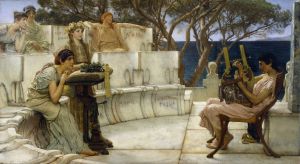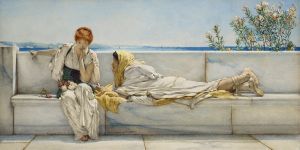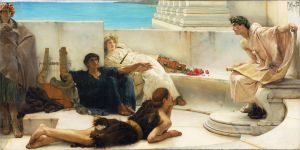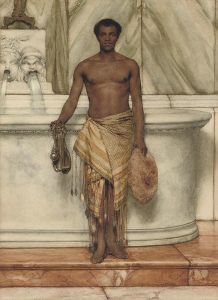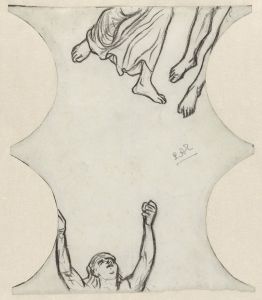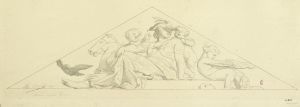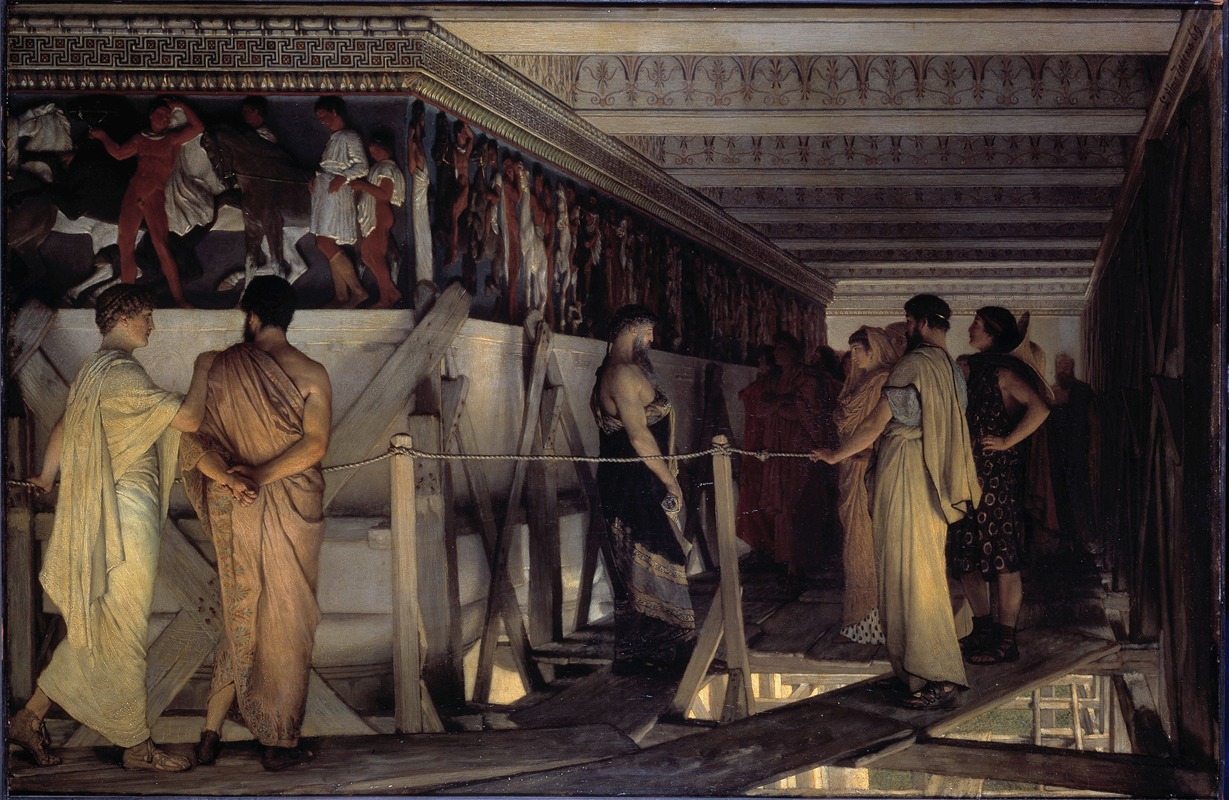
Pheidias And The Frieze Of The Parthenon
A hand-painted replica of Lawrence Alma-Tadema’s masterpiece Pheidias And The Frieze Of The Parthenon, meticulously crafted by professional artists to capture the true essence of the original. Each piece is created with museum-quality canvas and rare mineral pigments, carefully painted by experienced artists with delicate brushstrokes and rich, layered colors to perfectly recreate the texture of the original artwork. Unlike machine-printed reproductions, this hand-painted version brings the painting to life, infused with the artist’s emotions and skill in every stroke. Whether for personal collection or home decoration, it instantly elevates the artistic atmosphere of any space.
"Pheidias and the Frieze of the Parthenon" is a painting by the renowned 19th-century artist Lawrence Alma-Tadema. Alma-Tadema, a Dutch-born painter who spent much of his career in England, is celebrated for his detailed and archaeologically informed depictions of the ancient world, particularly ancient Rome and Greece. This painting is one of his works that reflects his fascination with classical antiquity.
The painting portrays the ancient Greek sculptor Pheidias, who is historically credited with the creation of the Parthenon sculptures, also known as the Elgin Marbles. These sculptures originally adorned the Parthenon, a temple on the Acropolis of Athens dedicated to the goddess Athena. Pheidias is considered one of the greatest sculptors of classical Greece, and his work on the Parthenon frieze is particularly noted for its intricate detail and dynamic composition.
In "Pheidias and the Frieze of the Parthenon," Alma-Tadema captures a moment of artistic creation and admiration. The scene is set in an imagined studio or workshop where Pheidias is shown overseeing or contemplating the frieze. The painting reflects Alma-Tadema's meticulous attention to historical accuracy and detail, a hallmark of his work. He often conducted extensive research to ensure the authenticity of the settings, costumes, and artifacts depicted in his paintings.
Alma-Tadema's interest in classical themes was part of a broader 19th-century fascination with antiquity, which was fueled by archaeological discoveries and a growing interest in the ancient world. His paintings often evoke a sense of nostalgia and romanticism, inviting viewers to imagine the grandeur and beauty of ancient civilizations.
The painting is characterized by Alma-Tadema's signature style, which includes a polished finish, vibrant colors, and a keen eye for detail. His use of light and shadow adds depth and realism to the scene, drawing the viewer into the world of ancient Greece. The composition is carefully arranged to focus attention on Pheidias and the frieze, highlighting the artist's role as both creator and observer.
"Pheidias and the Frieze of the Parthenon" exemplifies Alma-Tadema's ability to blend historical accuracy with artistic imagination. While the painting is not a literal representation of a historical event, it captures the spirit of artistic endeavor and the reverence for classical art that characterized the period in which Alma-Tadema worked.
The painting is part of a larger body of work by Alma-Tadema that explores themes of art, history, and culture. His paintings continue to be celebrated for their beauty and historical interest, offering a window into the past through the lens of 19th-century artistic sensibilities. Today, Alma-Tadema's works are held in various public and private collections, where they continue to be appreciated by art enthusiasts and historians alike.










